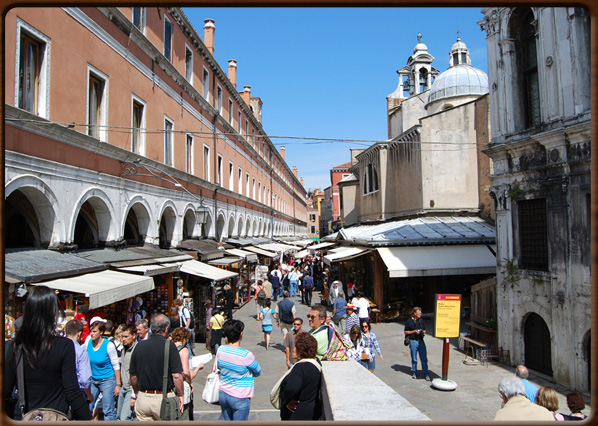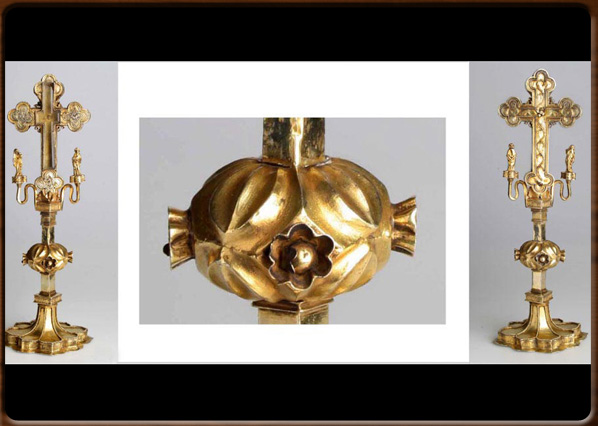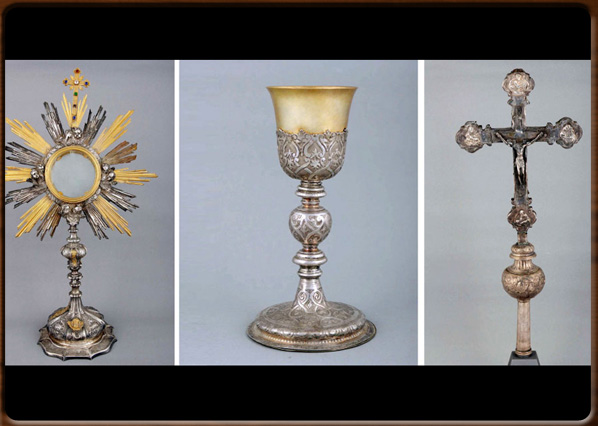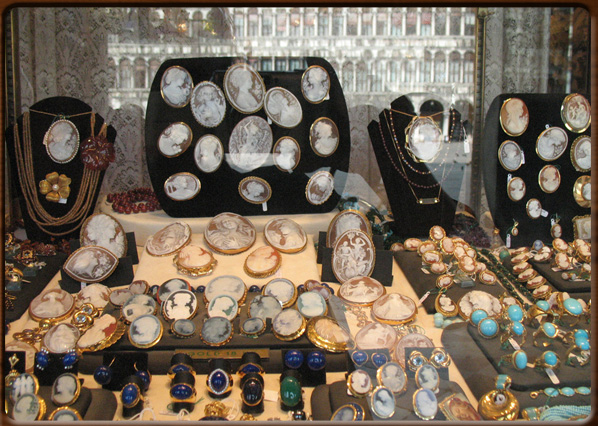
The Ruga degli Oresi in Rialto.

Cross shaped reliquary, beginning of 15th century.

Ancient mask, private collection.

Holy silverware, beginning of 17th century .

Earrings Venetians of the 700.

Cameos in St. Mark' s square.






No video
Great craftsmanship has always been of fundamental importance in Venetian life and society. Craftsmen belonged to guilds ("Corporazioni or Arti", Corporations or Arts), one of the most important being that of the goldsmiths and silversmiths. Venetian goldsmiths were so skilled thanks to a long apprenticeship to guarantee excellent professional training in order to satisfy their sophisticated customers’ demands. After an initial period as an apprentice lasting two or three years, an aspiring goldsmith became a “lavorante” (young worker) and then, after a few years and upon passing a test, was declared a master goldsmith and so finally able to set up in business on his own.
The Scuola or "Arte degli Oresi" was created in the 13th Century and only disappeared at the end of the 18th Century. Members were workshops creating fine gold and silver jewellery, much appreciated and sold throughout Europe.
In 1773 in Venice, when the population was almost double that it is today, there were 415 goldsmiths and jewellers, 476 “Tiraoro” and “Battioro”, the 75 “Diamanteri da tenero” 75 and 26 “Diamanteri da duro”. These figures show just how flourishing this trade was, especially when compared to the number of members in other guilds, such the carpenters (1924) and the booksellers and printers (828).These craftsmen belonged to one of the oldest of Venetian guilds, a serious and efficient structure, with iron rules in a “Capitolare” dated 1233 that all members were expected to obey. These specifications (also known as a Mariegola) provided for strict controls and made it obligatory to mark all items with the St. Mark’s lion symbol and the initials of the massari responsible for carrying out the checks.
In Venice the “Oresi Zogielieri” (goldsmiths and jewellers) were concentrated in the area around Rialto, in the "Ruga dei Oresi". However, unlike the glass furnaces which were all relegated to Murano, the goldsmiths’ workshops were free to move where they liked.
This meant that many opened new premises outside Venice. There was an established tradition in Padua and Vicenza. In fact, Vicenza is still considered one of the major gold centres in Italy and Europe.
All kinds of everyday objects were made in gold and silver, from vases to pitchers, mirrors, chandeliers and cutlery (Venetian cutlery was on a par with that of France, with bone-china details).
As regards jewellery, the most famous goldsmith shop was the manifattura Manin. Typical items were the jewels in gold and silver filigree, enamel and rock crystal. Venice was also the first European city that specialised in the cutting and trading of diamonds. The city’s great heritage in jewellery was mostly lost with the fall of the Venetian Republic.
1100 - 1200 - - rev. 0.1.7